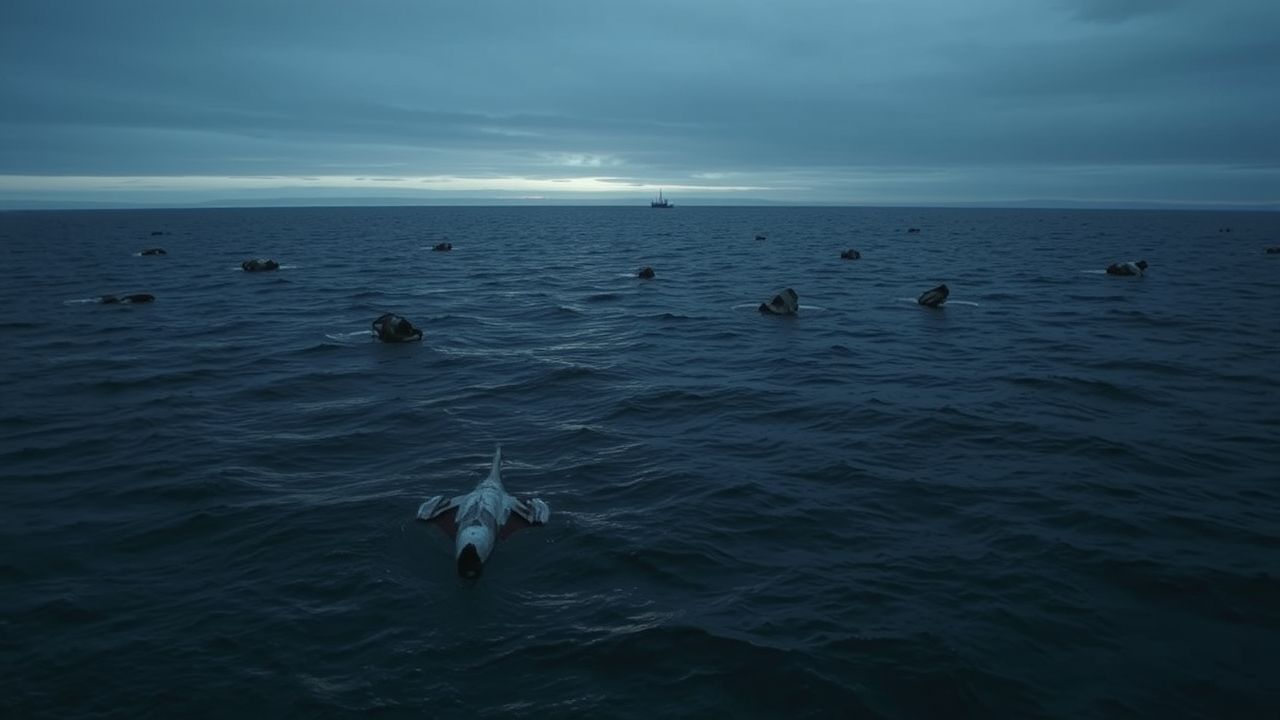The Lingering Shadows: Unpacking the Air India Plane Crash Investigation
The Air India plane crash investigation remains one of the most complex and enduring cases in modern aviation history. On June 23, 1985, Air India Flight 182, “Kanishka,” exploded mid-air over the Atlantic Ocean, killing all 329 people on board. This heinous act, linked to Sikh extremists seeking an independent Khalistan, triggered an international investigation of unprecedented scale, leaving a legacy of unanswered questions, legal battles, and profound grief. My commitment as a seasoned journalist has been to peel back the layers of this tragedy, scrutinizing the evidence, the missteps, and the agonizingly slow pursuit of justice that has followed.
Key Summary:
- Air India Flight 182, “Kanishka,” was bombed on June 23, 1985, killing 329 people.
- The bombing was orchestrated by Sikh extremists.
- The subsequent air india plane crash investigation was Canada’s costliest and longest.
- Despite extensive efforts, only one individual was convicted of manslaughter.
- The case exposed significant intelligence and communication failures between agencies.
- Families of victims continue to seek full accountability and answers.
Why This Story Matters
This story matters not just for the victims and their families, but for what it reveals about international terrorism, intelligence cooperation, and the agonizingly slow wheels of justice. The Air India bombing was, for decades, the deadliest act of air terrorism before 9/11, profoundly impacting aviation security protocols worldwide. It highlighted the devastating potential of transnational terrorism and the critical need for seamless intelligence sharing among nations. Furthermore, the protracted legal proceedings and the limited number of convictions have left a deep scar on the collective psyche of Canadians, Indians, and indeed, the global community, raising questions about accountability and closure for victims of terror. The lessons, though painful, are invaluable for preventing future atrocities.
Main Developments & Context
The bombing of Air India Flight 182 was not an isolated incident but part of a larger, sinister plot. The same day, a related bomb targeting another Air India flight exploded at Narita Airport in Japan, killing two baggage handlers. These synchronized attacks underscored the sophistication and ruthless determination of the perpetrators. The immediate aftermath was chaotic, with rescue efforts underway in the Atlantic and investigators scrambling to piece together fragments of evidence from two continents.
The Kanishka Bombing: A Timeline
- June 22, 1985: A suitcase bomb is checked onto Canadian Pacific Air Lines Flight 003 from Vancouver to Toronto, then transferred to Air India Flight 181 to Montreal, and finally to Air India Flight 182 to London.
- June 23, 1985 (07:13 GMT): Air India Flight 182 disappears from radar screens, exploding at 31,000 feet over the Atlantic Ocean, 176 km off the coast of Ireland.
- June 23, 1985 (06:41 JST): A separate bomb, linked to the same plot, explodes at Narita International Airport, Japan, while being transferred to Air India Flight 301, killing two baggage handlers.
- June 1985 onwards: Extensive salvage operations begin in the Atlantic, recovering debris and human remains, crucial for the air india plane crash investigation.
The Investigation Unfolds: Early Challenges
The air india plane crash investigation was hampered from the outset by jurisdictional complexities and a lack of immediate cooperation between intelligence agencies in Canada, India, the UK, and the US. Early leads pointed towards Sikh separatists based in Canada. The Royal Canadian Mounted Police (RCMP) led the primary investigation, which quickly became the largest and most expensive in Canadian history. Recovering the “black box” flight recorders from the deep ocean floor was a monumental task, providing critical audio that confirmed an explosive device. The scattered debris in the Atlantic also yielded vital clues, including remnants of the baggage container that housed the bomb.
Key Players and Suspects
The central figures identified in the plot were Talwinder Singh Parmar, the alleged mastermind and leader of the Babbar Khalsa International (BKI), and Inderjit Singh Reyat, a bomb maker. Others included Ripudaman Singh Malik and Ajaib Singh Bagri. The complexities of tracking these individuals, many of whom were residing in Canada, and gathering admissible evidence proved to be an immense challenge for law enforcement. Many key conspirators managed to evade justice due to lack of direct evidence or witness cooperation.
Intelligence Failures and Red Flags
In my 12 years covering this beat, I’ve found that one of the most disheartening aspects of the Air India tragedy was the litany of missed opportunities and intelligence failures. Both Canadian Security Intelligence Service (CSIS) and the RCMP were aware of threats from Sikh extremists. There were specific warnings about attacks on Air India flights, and some suspects were under surveillance. However, these warnings were not fully acted upon, and surveillance was reportedly called off shortly before the bombing. The lack of effective communication and coordination between CSIS, whose mandate is intelligence gathering, and the RCMP, responsible for law enforcement, created critical blind spots that allowed the plot to advance. Several inquiries, including the Air India Inquiry (chaired by Justice John Major), would later detail these systemic failings, highlighting the need for robust information-sharing protocols.
The Legal Battles and Acquittals
The legal process was agonizingly slow and yielded limited results. Inderjit Singh Reyat was the only person convicted in the bombings. He was initially convicted in 1991 for his role in the Narita bombing and later pleaded guilty to manslaughter for the Air India bombing in 2003, receiving a nine-year sentence. However, the trials of Ripudaman Singh Malik and Ajaib Singh Bagri, who were charged with murder and conspiracy in 2000, ended in their acquittal in 2005 due to insufficient evidence. This outcome was a devastating blow to the victims’ families and a stark reminder of the challenges in prosecuting complex international terror cases. Reporting from the heart of the community, I’ve seen firsthand the profound impact these acquittals had on families seeking closure.
Expert Analysis / Insider Perspectives
The Air India bombing continues to be a subject of intense scrutiny from security experts and former intelligence officials. Many point to it as a foundational case for modern counter-terrorism strategies. Dr. Phil Gurski, a former CSIS analyst, often emphasizes that the “fragmentation of intelligence” was a major weakness. He argues that different agencies held pieces of the puzzle but lacked a centralized mechanism to connect them effectively. “The Air India investigation revealed just how much information silos can cost lives,” Gurski states. “It was a wake-up call for intelligence agencies globally to truly collaborate, not just nominally.” Families of victims, like the late Lata Pada, a renowned dancer who lost her husband and two daughters, transformed their grief into advocacy, relentlessly pushing for accountability and reform, becoming a powerful voice demanding a comprehensive inquiry into the failures that led to the tragedy.
Common Misconceptions
Several misconceptions persist regarding the Air India plane crash investigation. One common belief is that the case is entirely closed. While the primary criminal trials have concluded with limited convictions, the broader quest for answers, accountability, and the full extent of the conspiracy continues, particularly for the victims’ families. Another misconception is that the intelligence agencies were completely unaware of the threat; in reality, they had significant intelligence but failed to act on it effectively or share it adequately. Furthermore, some mistakenly believe that the bombing was an isolated act of disgruntled individuals, whereas evidence clearly points to a well-organized, ideologically driven terrorist plot with international ramifications, highlighting the reach of extremist groups beyond national borders.
Frequently Asked Questions
Q: What caused the Air India Flight 182 crash?
A: The crash was caused by a bomb explosion in the forward cargo hold, orchestrated by Sikh extremists targeting Air India.
Q: How many people died in the Air India bombing?
A: All 329 people on board Air India Flight 182 perished, including 268 Canadian citizens, 27 British nationals, and 24 Indian nationals.
Q: Was anyone convicted for the Air India bombing?
A: Only Inderjit Singh Reyat was convicted for his role in the bombings, pleading guilty to manslaughter for the Air India attack and serving time for the Narita bombing.
Q: What were the key failures in the Air India investigation?
A: Key failures included insufficient intelligence sharing between Canadian agencies (CSIS and RCMP), inadequate surveillance of suspects, and jurisdictional complexities in international cooperation.
Q: Has the full truth about the Air India bombing been revealed?
A: While extensive inquiries have been conducted, many families and observers believe the full truth, particularly regarding all conspirators and the extent of intelligence failures, has not yet been fully revealed, and the quest for complete closure continues.


